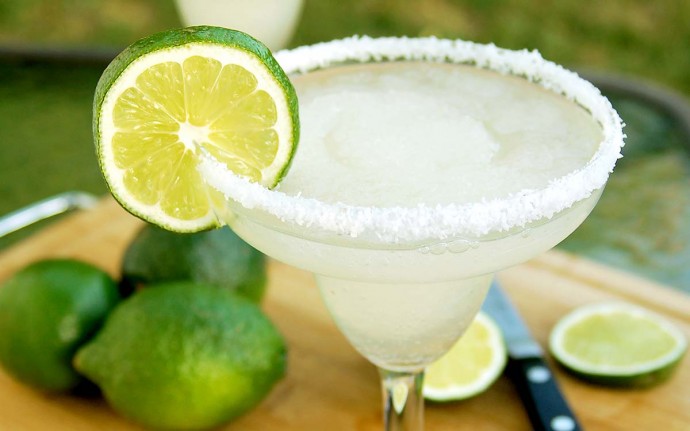It may come as a surprise these days, when it seems like every other cocktail bar has at least a few Mexican-inspired recipes on their menu, but tequila hasn’t always been a favorite among American drinkers. In fact, it didn’t really start showing up in cocktail books in the States until the ’30s.
But despite taking a while to catch on, the spirit has more than made up for its slow start by being the centerpiece of one of the most popular cocktails in the world: the Margarita. Like the classic Daiquiri, it’s a simple, citrusy drink, and for more than 40 years it’s been the unmistakable face of summertime and south-of-the-border beach hangouts.
Unfortunately, thanks to the popularity of syrupy pre-made mix, most people’s homemade Margaritas leave a bit to be desired. But with nothing more than a little elbow grease and an extra minute or two of prep time, it’s easy to whip one up that’s fresh, well-balanced, and will knock the socks off your party guests.
The Glass
Unlike most cocktails, it’s generally fine to serve a Margarita in any number of different glasses—the classic choice, of course, being the Margarita glass. It’s a variation on a more traditional coupe glass, and looks more or less like something you might use to serve a shrimp cocktail.
A standard cocktail or Martini glass works just as well, and if you prefer your drink on the rocks, it’s also totally acceptable to use an Old-Fashioned glass. It’s really all a matter of preference.
The Salt
If you ask us, ordering your Margaritas without salt is about as cardinal a sin as you can commit. It provides a nice counterpoint to the lime and tequila, and something just doesn’t feel quite right without it on the rim of your glass.
Kosher salt tends to stay put better than table salt, but feel free to experiment! There are all kinds of wonderfully weird artisanal salts out there that can give your drink a little bit of gourmet flair.
The Tequila
Using good tequila is key to making Margaritas that don’t suck, and if you only follow one rule it should be this: stay away from mixto tequilas like Jose Cuervo and Sauza. They aren’t made from 100% blue agave, and they can impart some pretty acrid flavors to your cocktail.
As for what you should get, stick with blanco or reposado tequilas that won’t overpower the other ingredients (añejo tequilas should generally be saved for sipping on their own). We usually like something solid but relatively inexpensive, like Cazadores Blanco, Espolòn Blanco, or Olmeca Altos Plata.
Luckily, none of those will run you much more than $25 for a 750ml bottle, so it’s not necessary to go broke to make this cocktail shine.
The Triple Sec
Triple sec is a bit of a controversial ingredient, because the quality can vary so drastically. Some brands are great, imparting a lovely orange note to balance out the lime juice, while others have a tinny aftertaste that can frankly ruin your Margarita.
As far as we’re concerned, the one bottle that can do no wrong is Cointreau. It won a double gold medal at the San Francisco World Spirits Competition, 93 points from the illustrious Beverage Testing Institute, a full five stars from the always hard-to-please Spirit Journal, and though it’s pricey for its category, it usually runs about $35. What’s not to love?
The Lime Juice
As always, one of the most important elements of a great cocktail is fresh-squeezed juice. Buy some ripe, firm limes and juice them just before you start mixing your drink—though apparently letting the juice sit out for an hour or so is still pretty good.
Of course, the bottled grocery-store stuff is always an option in a pinch, but you’re definitely going to forfeit the freshness that makes good Margaritas so fantastically summery. Our feeling is, why spend extra money when you can make an excellent drink on the cheap?



